- Quick Look at the 2020 Volkswagen Atlas Cross Sport | MotorTrend - March 13, 2024
- BMW Design – 2009 BMW Z4 – 2009 Detroit Auto Show - March 11, 2024
- Top 10 Car Features Women Love - October 7, 2023
Besides F-150 Lightning towing, I also wanted to see how good the electric pickup would be for road-tripping. So I planned a trip from New York City to Detroit. And by planned, I mean I put the trip in Google Maps and made sure there were Electrify America (EA) stops along the way. Could it be this easy?
In short? Yes, mostly. But let’s check the details because that’s where the devil lies.
So traveling from New York to Detroit is mostly on Interstate 80 across Pennsylvania and Ohio. Fortunately, I come from outside of Cleveland – there was a Yankees/Guardians playoff game and a visit to my family to break up the trip a bit. But if I was going direct, this is what it would look like:
A Better Route Planner (ABRP) shows the following route for the 625-mile trip:
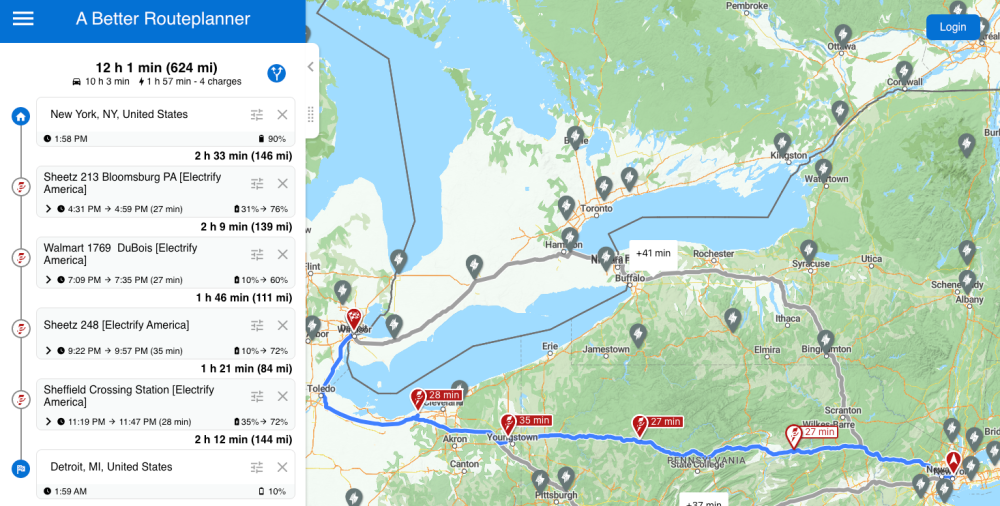
The stops are anywhere from 100-150 miles apart and each lasts under 30 minutes for charging. Normally this would be the beginning and end of my route planning but I know a lot of folks are a bit wary of long-distance EV travel and might want to think about backups.
Also Ford vehicles have Plug and Charge on Electrify America so you don’t have to mess with apps or a credit card. You just plug right in and charging starts about 20 seconds later, give or take.
In the unlikely event one of the chargers was down, Plugshare shows a ton of options during the first third of the trip and the last third but only a few fast chargers in the eastern two-thirds of Pennsylvania.

I should have paid more attention to this map, not because any of the chargers weren’t in working order but because it presented me with an option (Clarion Walmart 150kW EA station at the radius line) that would have allowed me to miss a stop and get to my destination quicker. ABRP was good, not great at planning this route.
Ford F-150 Lightning aerodynamics
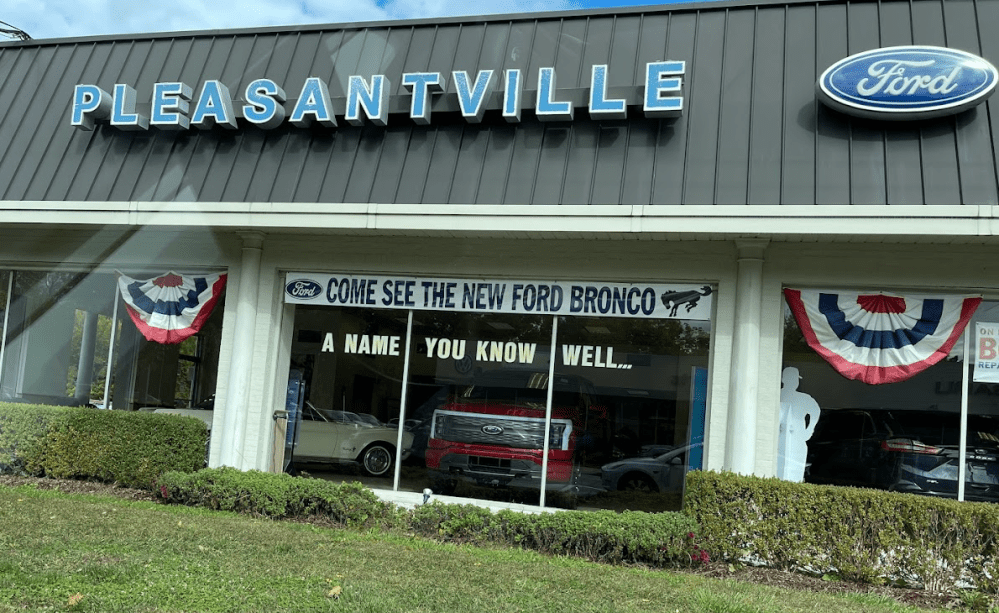
Because I was going on a road trip, I thought I’d be able to go a little faster if I made the vehicle a little more aerodynamic. A pickup without a tonneau cover is about as bad as it gets with vehicle aerodynamics, and I thought I could save valuable time (shorter charger stops, driving much faster) if I added one. Ford obliged me, and Pleasantville Ford had a vinyl one installed over a lunch break. They also had the exact vehicle I was driving center stage in the showroom and apparently were selling quite a few of them. (See photo above.)
The F-150 Lightning is also a huge vehicle. Here it is compared to my Model 3 and my garage. For the record, I’d never buy one of these for road trips or for commuting or anything other than as a work truck. But these are the best-selling vehicles in the US, and I don’t think that many people use them only for work.
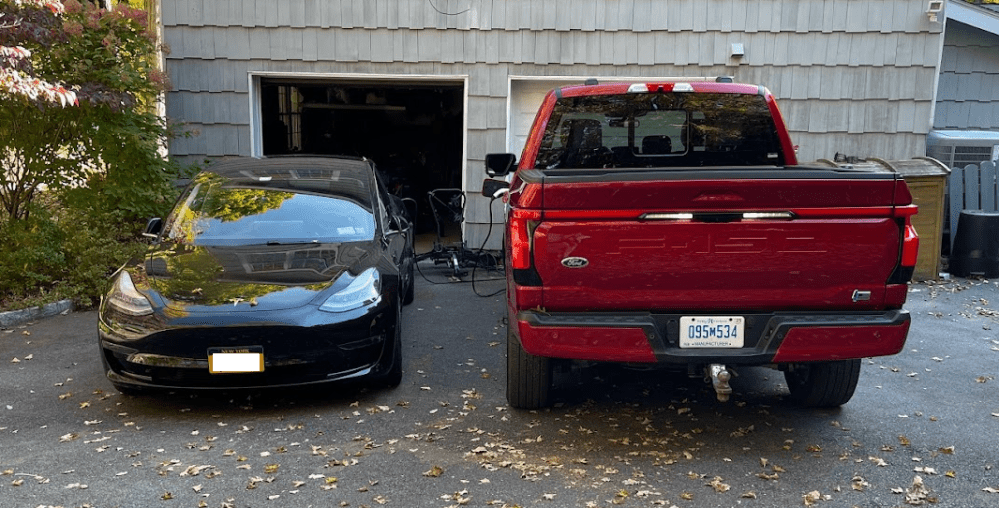
Ford F-150 Lightning road trip
I left home fully charged with about 284 miles showing on the F-150 Lightning and about 150 miles to the first charging spot in Bloomsburg PA. I drove at about 65-70mph the whole way and was getting pretty similar if slightly worse range than had been predicted. I got a chance to use Blue Cruise, and it worked really well.
Blue Cruise in the F-150 allows you to take your hands off the wheel in Interstate driving situations, and it felt similar to Chevy’s Supercruise, like you are a passenger in the car. There is a slight bouncing from side to side in the lanes that happens sometimes, particularly on roads with poor paint. Overall, it was right up there with GM’s Supercruise in terms of hands-off autopilot experience. Changing podcasts on CarPlay or finding a snack in my bag are super easy.
I’d been to Bloomsburg PA before because there is a Tesla Charger at the Ruby Tuesdays right off the highway. Unfortunately, the EA station was over two miles from the highway on a road running parallel.
Luckily, however, it is located at a Sheetz next to an Arby’s, so dinner was on. I arrived with over a third of a full charge, and I could have probably gone safely another 80 miles. I initially got 167kW charge that went up to almost 180kW.
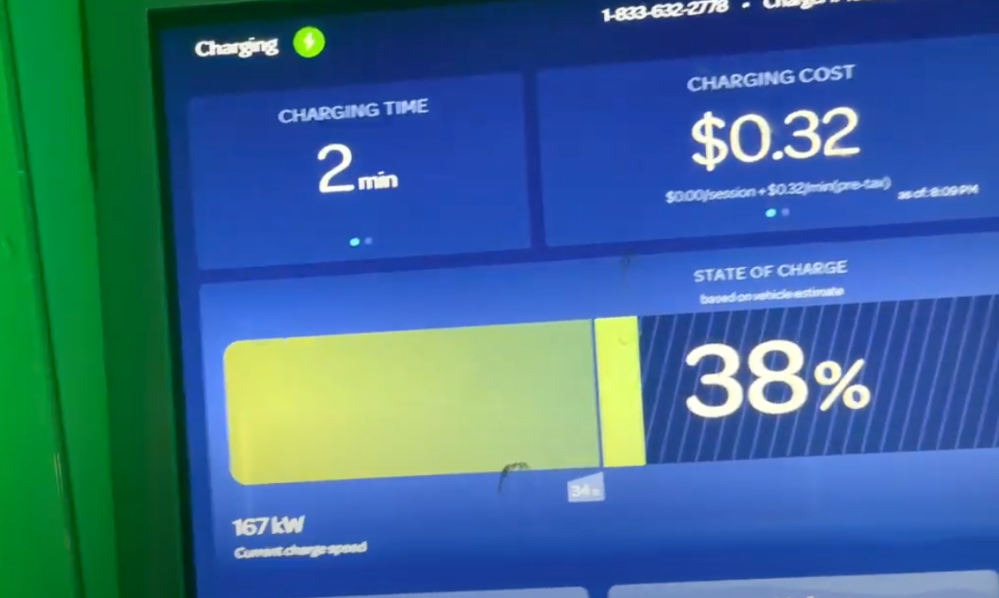
I only stayed at the station for around 22 minutes, which was enough time to get a sandwich in me and enough charge in the Lightning to the next charging station in Dubois, Pennsylvania.
This was a mistake.
Had I stayed another 10-15 minutes, I could have easily made it to the 150kW Walmart in Clarion, Pennsylvania, and could have made it to Akron, Ohio, easily from there. I think ABRP had me go to the earlier station because it was a 350kW. But really 150kW station would have given me 90% of the speed I was seeing at both of the 350kW stations. Lesson learned.
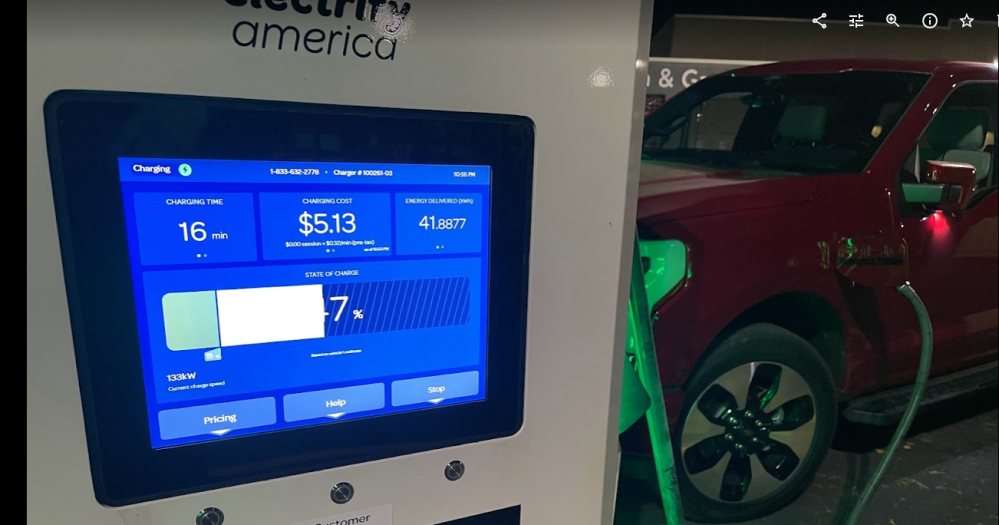
I saw a slightly faster speed at the DuBois Walmart (which was also a few miles off the highway), topping out in the 180-190kW range.
I then had to stop at the Sheetz EA in Youngstown to top off. From there, I only needed about 10 minutes of charge to get to my destination in Akron where a Level 2 overnight charge was waiting for me.
Here I had the only EA fault of the trip. (See below.) I actually didn’t have to move the F-150, just grab a plug from a neighboring charge port and bring it over. Back in business.

Generally speaking, EA stations were pretty consistent, and I would see about 170-180kW to start, about 133kW at 50% state of charge, and down to about 115kW at 70% state of charge. I didn’t really ever have to stay anywhere longer than 30 minutes.

Interestingly, the hotel where I stayed had another F-150 Lightning charging where mine was. It was a rare Pro trim and the first Ive seen in the wild.
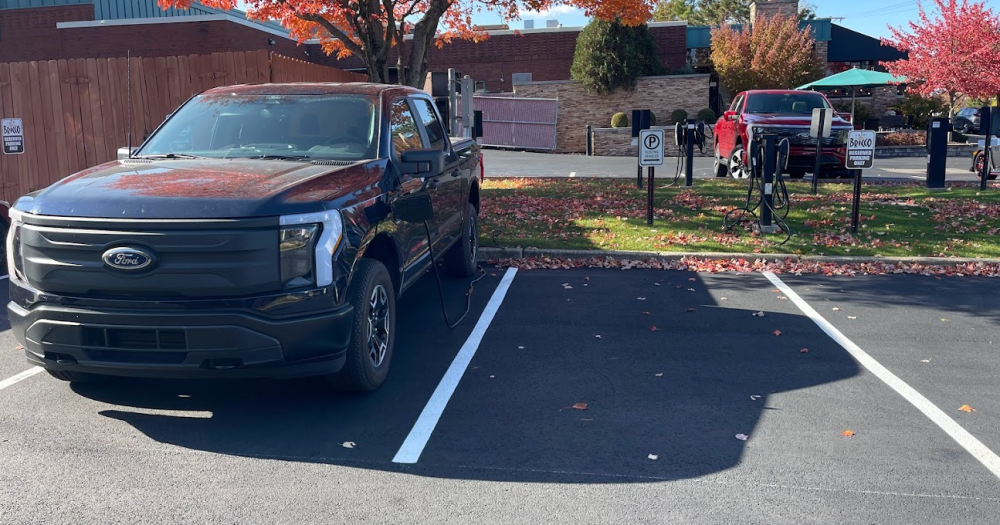
For the record, we took my mom’s Chevy Bolt to Downtown Cleveland to watch the game (Cleveland won with a walk-off – woo) because I didn’t want to have to park the F-150, though I probably could have.
The next day, I left Akron with a full charge and headed 140 miles toward Detroit. I could have easily made it the whole way but wanted to have some charge for towing the next morning, so I filled up again outside of Toledo.
Electrek’s take
Yes, you absolutely can take an F-150 Lightning on a road trip.
Is the Lightning the best vehicle for a trip cross country? No. If I was driving a Kia EV6 or a Model 3, the charging stops would have been half as long. It would have required half the energy.
But it was a good experience and will get better as EA and other charger ventures fill those gaps and make picking a charging stop the same as picking a gas station.
As for the chargers, EA with Plug and Charge is as easy as a Tesla and, in many cases, just as fast. I would have liked Chargers closer to the highway, but we’ll get there.
Subscribe to Electrek on YouTube for exclusive videos and subscribe to the podcast.
